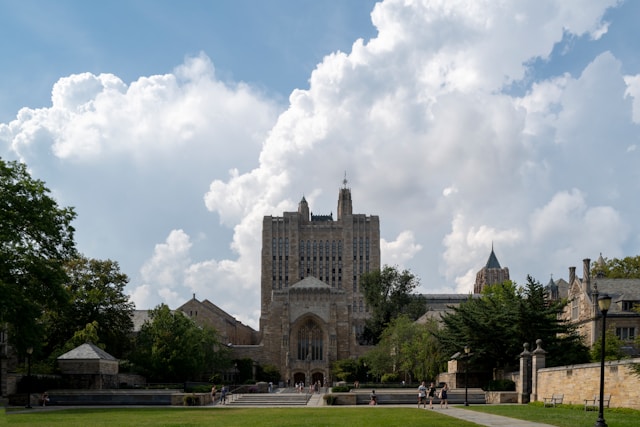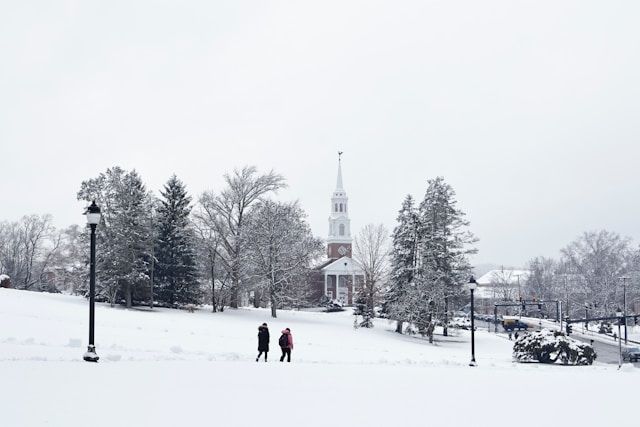New Haven stands as one of Connecticut’s most diverse cities, with an impressive diversity score of 88 out of 100. The city’s population of 134,023 showcases a rich tapestry of cultures, ethnicities, and backgrounds that has become increasingly diverse over recent years. Walking through New Haven County reveals this vibrant mix, from the historic streets surrounding Yale University to the bustling neighborhoods that dot the landscape.
Demographics vary throughout the city, with the southern areas showing the highest diversity levels while eastern sections remain more homogeneous. This cultural mosaic contributes significantly to New Haven’s character, influencing everything from its renowned culinary scene to community events. The city’s population includes 29,013 children and 105,010 adults, creating a dynamic community with varying age distributions across different ethnic groups.
Get a discount of 15% to 70% on accommodation in Connecticut! Look for deals here:
Connecticut Hotels, Apartments, B&Bs
Demographic Profile
New Haven’s population showcases remarkable diversity across racial, ethnic, age, and household dimensions. The city’s demographic makeup reveals a vibrant multicultural community with distinct characteristics that set it apart from many other Connecticut municipalities.
Population by Race and Ethnicity
New Haven stands as one of Connecticut’s most diverse cities, with 72% of residents being people of color, compared to only 37% statewide. According to the 2020 Census, New Haven has a population of 134,023.
The racial and ethnic breakdown shows significant diversity:
- Hispanic/Latino: Forms a substantial portion of the population
- Black/African American: Represents a significant demographic group
- White: Makes up less than a third of residents
- Asian: A growing community within the city
- Multiracial individuals: Those identifying with two or more races
The diversity score for New Haven is 88 out of 100, making it considerably more diverse than many other U.S. cities. Interestingly, the southern areas of New Haven show the highest diversity, while eastern neighborhoods tend to be less diverse.
Age Distribution and Median Age
New Haven’s population includes 29,013 children and 105,010 adults, creating a balanced age distribution that supports various community needs. The presence of Yale University significantly influences the city’s age demographics.
Young adults (18-24) represent a substantial segment due to the student population. This gives the city a youthful energy that contributes to its vibrant cultural scene and innovative atmosphere.
Middle-aged adults form the backbone of the workforce, while seniors contribute to the city’s rich historical knowledge and community engagement. This age diversity creates an intergenerational mix that strengthens New Haven’s social fabric.
Household and Family Structures
New Haven features diverse household arrangements reflecting modern family structures and living situations. Single-person households are common, particularly near Yale University and in downtown areas.
Family households represent an important segment of New Haven’s population, with various configurations including:
- Traditional two-parent families with children
- Single-parent households
- Extended families sharing residences
- Multigenerational homes
Marital status varies significantly across neighborhoods, with some areas showing higher rates of married couples while others have more single residents. This diversity in household composition contributes to New Haven’s dynamic community character.
Housing arrangements range from student apartments to family homes, creating distinct neighborhood atmospheres throughout the city. These varied living situations help make New Haven an accessible and appealing destination for different lifestyle preferences.
Socioeconomic Overview
New Haven’s economic landscape reflects a mix of educational institutions, healthcare services, and growing entrepreneurship, all while facing challenges in housing affordability and income inequality.
Economic Landscape and Growth
New Haven’s economy has shown promising growth in recent years, with median household income rising from $48,973 to $54,305 between 2021 and 2022—a substantial 10.9% increase. This growth occurs alongside a modest population increase of 1.39% during the same period.
Yale University serves as the city’s economic anchor, providing thousands of jobs and attracting investment to the region. The university’s presence creates a knowledge-based economy that supports innovation and research initiatives.
Despite this growth, economic inequality remains a challenge. Neighborhood income inequality has increased over the past 40 years, with more residents living in either wealthy or poor neighborhoods while middle-income areas decline—a process known as “economic sorting.”
Local businesses and entrepreneurship are gaining momentum in downtown areas, with tech startups and creative industries finding their place in this historic city.
Education and Healthcare Services
New Haven boasts world-class educational institutions, with Yale University at the forefront. The university not only provides elite educational opportunities but also contributes significantly to research and innovation in the city.
The healthcare sector represents another major component of New Haven’s economy. Yale New Haven Hospital and associated medical facilities employ thousands of residents and attract medical professionals from around the world.
Public education in New Haven faces typical urban challenges, though specialized magnet programs offer quality alternatives for local students. The education sector’s influence extends beyond classrooms through:
- Research partnerships with local businesses
- Community outreach programs
- Cultural and artistic institutions
- Public health initiatives
These educational and healthcare institutions create a stable employment base that helps shield New Haven from some economic fluctuations affecting other post-industrial cities in the Northeast.
Housing and Transportation
Housing affordability presents significant challenges for many New Haven residents. The city’s growing appeal has put pressure on housing prices, particularly near Yale and downtown areas.
The average commute time for New Haven workers remains competitive compared to larger metropolitan areas. Public transportation options include:
- CT Transit bus system
- Metro-North rail connections to New York
- Tweed New Haven Airport for regional flights
- Developing bicycle infrastructure
Neighborhoods show distinct character and varying housing costs, with more diverse and affordable options available in areas farther from the university. Recent development projects aim to increase housing units while maintaining the city’s historic character.
Urban renewal initiatives focus on creating mixed-income housing developments to address economic segregation and improve neighborhood integration across the city’s diverse population.
Get a discount of 15% to 70% on accommodation in Connecticut! Look for deals here:
Connecticut Hotels, Apartments, B&Bs








